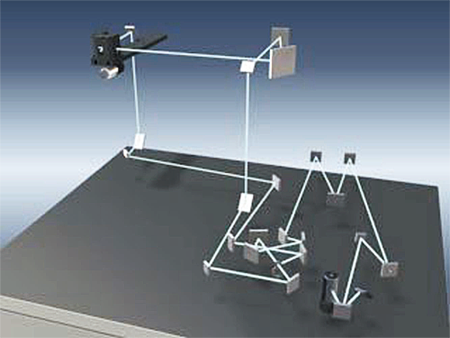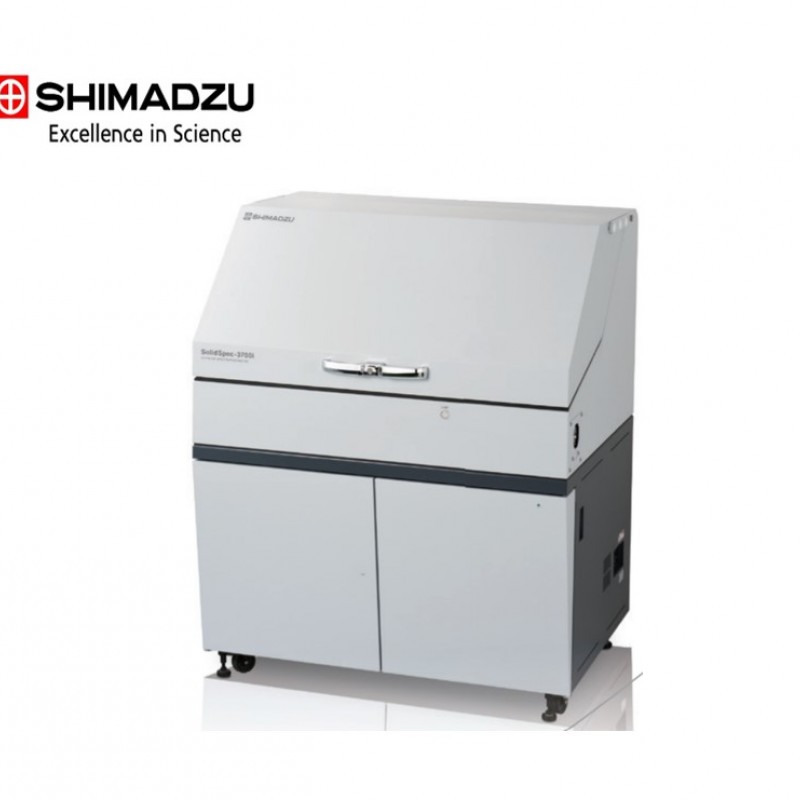
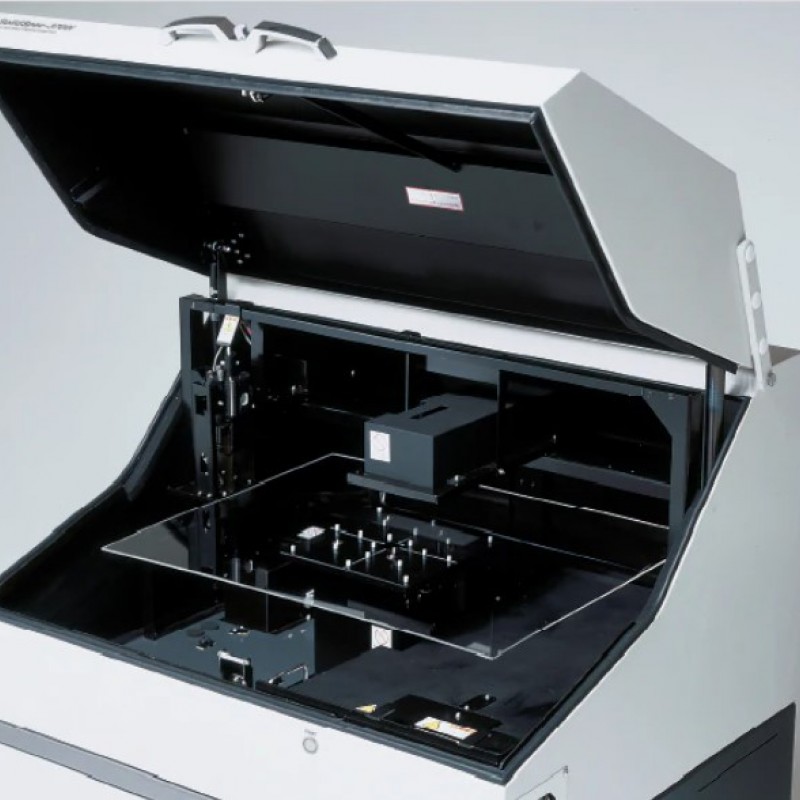
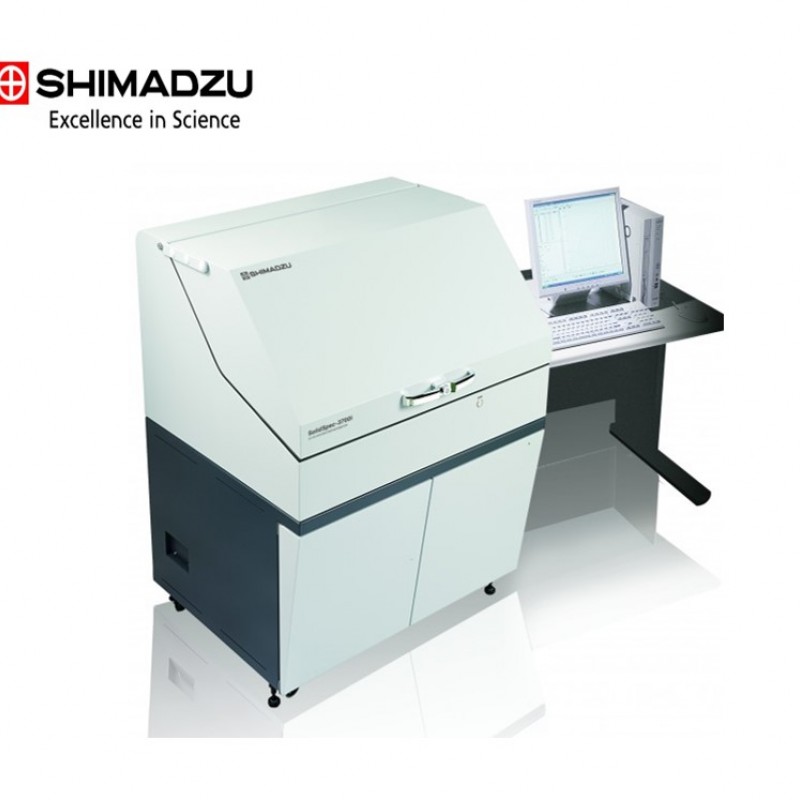
Shimadzu SolidSpec-3700i/3700i DUV UV-VIS-NIR Spectrophotometers offer high sensitivity, deep UV measurement and large sample chambers and are at the top of their range.
SolidSpec-3700i/3700i DUV spectrophotometers have three detectors, PbS, InGaAs and PMT (photomultiplier tube) covering the range from ultraviolet to near infrared.
High accuracy for transmittance and reflectance is required for the measurement of optical parts. The SolidSpec-3700i/3700i DUV have three detectors which cover the range from ultraviolet to near-infrared. The sensitivity in the near-infrared region is significantly enhanced by using both InGaAs and cooled PbS detectors. Highly accurate and highly sensitive spectra are obtainable from ultraviolet to near-infrared.High accuracy for transmittance and reflectance is required for the measurement of optical parts.

The photomultiplier tube detector can be switched to the InGaAs detector in the range from 700 nm to 1000 nm (the default switching wavelength is 870 nm). The InGaAs detector can be switched to a PbS detector in the range from 1600 nm to 1800 nm (the default switching wavelength is 1650 nm).
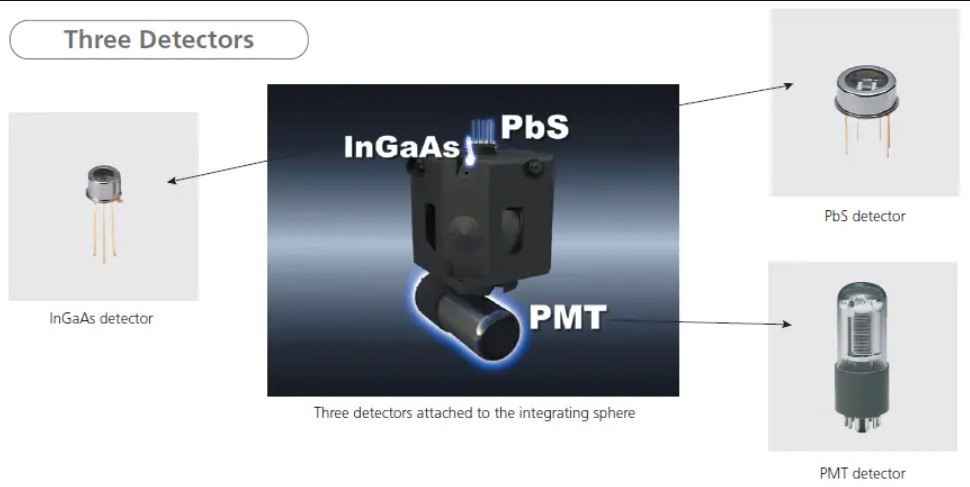
The development of precise laser machining using an ultraviolet laser such as an ArF excimer laser enhances the requirement for transmittance or reflectance measurements of optical parts in the deep ultraviolet region. The SolidSpec-3700i DUV enables measurement in the range of 175 nm to 2600 nm with an integrating sphere and the range of 165 nm to 3300 nm by mounting the optional Direct Detection Unit DUV. With this additional unit, the wide range from deep ultraviolet to near-infrared is now measurable.
Oxygen molecules in the atmosphere absorb ultraviolet light under 190 nm. Nitrogen gas purging for both the optical and the sample compartment is required to remove the interfering oxygen molecules. Since the SolidSpec-3700i DUV has purge inlets for each compartment, efficient nitrogen gas purge is possible so that the time required for purging after sample replacement is reduced, and high sensitivity with lower stray light in the deep UV region is achieved.
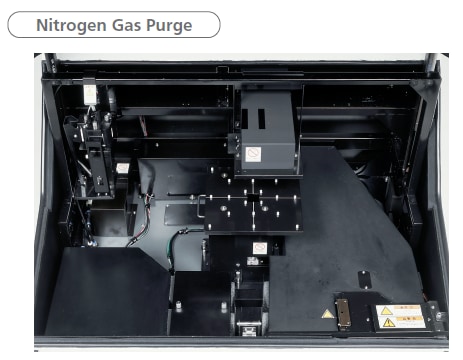
Materials which do not absorb deep ultraviolet light are required to be used as the window material for the detector and the material for the inside of the integrating sphere to enable performance in the deep ultraviolet region. The SolidSpec-3700i DUV spectrophotometers uses a PMT detector with fused silica as the window material and an integrating sphere with resin that has highly reflective characteristics in the deep ultraviolet region as the inside material.
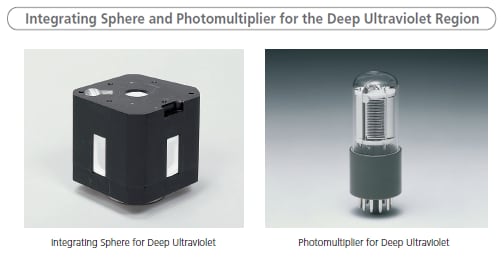
The SolidSpec-3700i & 3700i DUV ultraviolet visible region spectrophotometers have large sample compartments which allow large samples to be measured without sample destruction. Their internal dimensions are 900W × 700D × 350H mm. A sample maximum of 700W × 560D × 40H mm can be set in the sample compartment and an entire sample area of 12 inches or 310 × 310 mm is measurable by mounting the Automatic X-Y stage (option). The vertical optical path makes it possible to perform transmission or reflectance measurements of large samples.
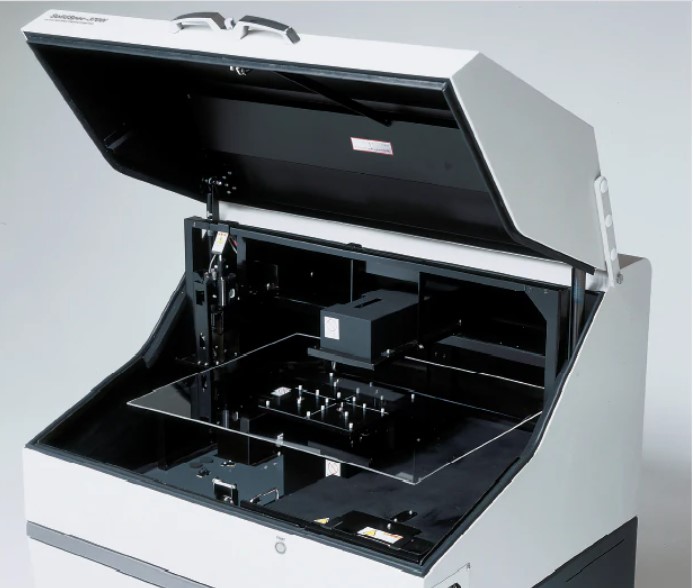
The three-dimensional optical path enables non-destructive measurement of large samples, without having to cut them smaller. In the optical path of previous models, light only traveled horizontally, but the new models include a three-dimensional optical path (U.S. patent 6583872) with light also traveling in the vertical direction. Samples can be placed horizontally, which makes it easier to place large samples.
